A recent survey from Bankrate.com found that only 39% of Americans have enough cash saved to cover an unexpected $1,000 expense. While the past year has brought tremendous challenges, the survey’s results have been consistent for years – the majority of us simply do not have enough savings to protect from the unexpected. Building an emergency fund makes intuitive sense. We know that life is full of unknowns, and it is better to pay for life’s curveballs with our own money instead of borrowing and paying back with interest. It can be hard enough to meet everyday expenses, so the idea of saving more isn’t always a high priority, and for some, is impossible. Additionally, after taking inflation into account, growing a cash savings balance may actually be a losing investment. However, in personal finance, the best returns are not always measured in dollars and cents. Let’s explore the framework of principles to a thoughtful plan of action for cash savings.
The Importance of Savings:
“Emergency fund”, “rainy day fund”, and “dry powder” are just a few catch phrases that describe the importance of having a certain amount of accessible cash set aside. A previous article described “PYF” (Paying Yourself First) and how setting up an automated monthly savings strategy supercharges your finances. For every variable in our lives that we control, there are countless others that we cannot. Unexpected expenses come up, income can be lost or reduced, and markets can (and will) crash and rebound. These variables present both challenges and opportunities, and that is where the benefit of having a consistent cash savings strategy comes into play. Let’s consider some basic principles and how you can apply them.

Emergency Fund Principles:
- Baseline: A general rule is to have between 3 – 6 months of your necessary expenses in an easy-to-access cash savings account. Should there be a drop in income or an outsized expense, you should be able to continue paying everyday living expenses without immediately going into consumer debt. Any personal financial crisis increases stress levels, knowing that you have a strong backstop to support you will help manage the rough times.
- Separate & Accessible: Your emergency fund should be kept separate from your everyday checking, but should be linked so that transfers can be easily made. While savings accounts typically allow only 6 transfers per month, this should not be a problem since it is not intended to be used regularly.
- Earn Interest: Be sure that your money is kept in an FDIC-insured account. This provides that the federal government guarantees your money (up to $250,000) if the bank that holds the account goes out of business. Use a “high yield savings account” typically offered by institutions that do not have physical locations and can afford to pass along a higher interest rate to depositors. Interest rates are at historic lows, and I will write about other ways to generate more yield from your cash, but a high yield account is a must! If it ain’t yielding, you best be leaving!
- Monitor & Progress: When it comes to funding the account, whatever baseline you have should be prioritized as a primary goal. After adjusting to having this outflow and your baseline is met, you can allocate it to a different investment account to support your wealth-building momentum – all without feeling like you are limiting your current cash flow, because you are already mentally used to the outflow! As life throws its curveballs, you will need to use some of the balance, which is exactly what the money is there to do.
Applying the Principles:
- Calculating & Funding the Baseline: Calculate your baseline and then divide by a certain number (6, 12, 18), to get the monthly amount to set up as an automatic transfer from your checking to your high yield savings account. Be reasonable, but try to reach this goal quickly.*
- Opening the Account: A quick Google search can help you find the names of reputable and FDIC-insured institutions that offer a high yield savings account option. Connect the High Yield Account to your checking and schedule the monthly transfer from #1.*
- Maintain the Savings Momentum: Track your balance as part of your regular cash flow management. Replenish any time you dip below your balance target. It’s a good idea to continue adding small amounts even after your balance target has been reached. This forces you to maintain the “Pay Yourself First” mindset and will help you jump on opportunities as they arise. You can also use this account to set shorter term savings goals (i.e. vacation, car purchases) by saving above and beyond your baseline.

A powerful but underemphasized point when discussing emergency funds is having more cash than you need available for opportunities. Just like surprise expenses can come up, surprise opportunities to deploy cash smartly can as well. Take the stock market drop in early 2021: Hopefully you didn’t sell out your current investments when prices collapsed, and if you used cash to purchase equities during that period, you would be sitting on some pretty nice returns now. Opportunities will come, sometimes when you least expect them to – life’s curveballs tend to work both ways. Be prepared to handle both sides of the plate and you will be hitting financial home runs regularly!
*For a free baseline calculator template or a high yield account template commoncents@northbrookfinancial.com
_
Elliot Pepper, CPA, CFP®, MST is Co-Founder of Northbrook Financial, a Financial Planning, Tax, and Investment Management Firm. He has developed and continues to teach a popular Financial Literacy course for high school students.

 Common Cents
Common Cents